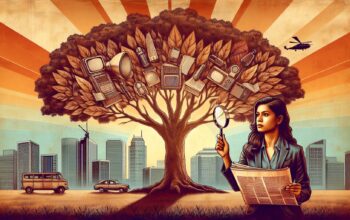
In our dynamic, fast-paced world where change is the only constant, staying updated is not only essential but also a given. The nature of news and the way we receive it has rapidly transformed over the years. The influx of digital news outlets, the rise of social media platforms, and the pervasiveness of mobile devices have fundamentally altered the landscape of news consumption. This instancy, while facilitating the swift dissemination of entertainment news, presents unique challenges that call for critical examination.
 Unraveling the Complexity of Global News Landscape
Unraveling the Complexity of Global News Landscape
Recent years have been marked by an unprecedented scale of global events. From the international health crisis represented by the COVID-19 pandemic, and its resultant socio-economic aftereffects, to climate change manifestations like rampant wildfires and weather anomalies, global news has seldom been as omnipresent. Each of these events underscores the significant role played by the media in assembling a global narrative, and highlighting shared concerns and collective initiatives.
Ever since the Internet buried the lead for traditional hardcopy news, the digital news landscape has functioned like a double-edged sword. While democratizing access to news and empowering individuals with the ability to make informed decisions, the digital news landscape is also fraught with misinformation and fake news. The challenges of maintaining journalistic integrity and providing accurate, unbiased news in this highly digitized landscape are significant.
The Media’s Dual Role in Society
The media is both a mirror and molder of society. Its primary role as a mirror reflects the events taking place worldwide, serving people’s need to remain updated and make informed decisions. However, its transformative role as a molder is seen in how it can shape public opinion, focus attention on specific subjects, and even set national agendas. The media’s influence is amplified exponentially in an era widely known as the ‘information age’.
Yet, the malleability of digital content generation and the obfuscation of authorship enable the propagation of misleading or untruthful information. The advent of ‘fake news’ – the deliberate spread of false information disguised as news – is potentially destructive to public discourse and the democratic sphere. Preserving the authenticity of journalistic content in this climate necessitates a staunch adherence to rigorous fact-checking protocols, a strong commitment to fair reporting, and the cultivation of digital literacy among consumers.
Reflection and Public Awareness
Engaging with the news requires both receptivity and skepticism. It necessitates staying updated about the changing world around us but also requires the critical scrutiny of the information we are presented. In an increasingly polarized and complex world, unbiased, honest news serves as a beacon of information and understanding that enables us to make informed decisions and fathom the state of the world around us.
The news landscape, tasked with such a critical role, is continuously evolving to meet these challenges. Media organizations are continuously innovating on their fact-checking methods, making them more rigorous. Collaboration between media outlets across borders is being harnessed to combat the ubiquity and international nature of misinformation.
Just as the media evolves for the better, as consumers, we must adapt and evolve too. By honing our digital literacy skills, maintaining a healthy skepticism, and actively verifying the facts before accepting them, we become not only informed citizens but also responsible participants in the media ecosystem.
Ultimately, the balance between leveraging the unique opportunities presented by digital news media and mitigating its intrinsic challenges defines the efficacy of the news landscape. As the nexus between the society and the world at large, the news media’s role is nuanced, crucial, and enduring.



